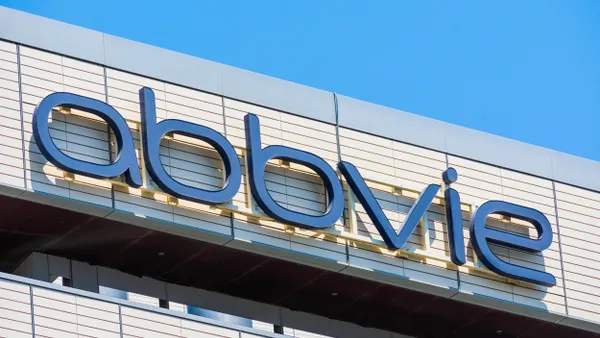With the proliferation of broadband and advances in technology, e-promotional and educational online activities are on the rise. Detail videos may not have revolutionized the pharma industry in quite the way MTV has revolutionized the music industry, but the medium is gaining traction 10 years after making its debut. The goal is to increase and improve effective communications between pharma sales reps and physicians. This is particularly important as physicians continue to exhibit resistance to rep visits or lack the time to meet with reps during office hours. According to SDI’s 2007 ePromotion Annual Study, 81% of physicians participated in e-promotion as well as in-person details, up from 62% in 2006, with 10% substituting e-promotion activities for traditional details. Self-guided virtual details weighed in as the most widely used tactic by the industry and the preferred means of receiving medical information online by more than half of the physicians SDI surveyed; 14% of those surveyed preferred video details over virtual ones. More than half — 53% — of all e-promotion activities in 2007 were self-led (conducted by physicians themselves). In the same report, e-promotional spending as a whole increased by 20% compared with the previous year. “According to our ePromotion Audit, over the past three years, physician receptivity to video details has grown," says Heather Alba, senior manager, promotional audits/SFSS, at SDI. “Video detailing accounted for 9% of the total e-promotion activities in 2007 compared with only 1% of all e-promotion activities in 2004." Video detailing is definitely on the rise, agrees Meredith Abreu Ressi, VP, research, at Manhattan Research. Reports show a 10% increase in interest in video detailing between 2007 and 2008. Currently, Merck is aggressively spending on video detailing, according to SDI. Merck’s spending on e-promotional activities has more than quadrupled in the last three years, reaching almost $83 million in 2007. An example of its online expenditure is its health professional site, Merck OnCall (merckoncall.com), which provides product services 24/7 from any Internet-connected computer. Physicians can request samples, prescribing information, patient educational materials, disease management tools, and online educational forums, as well as speak to a Merck sales rep on the site. According to SDI’s 2007 ePromotion Annual Study, physicians are responding well to Merck’s activities. Of the estimated 1,000 physicians who participated in the study, Merck was mentioned as a top company for e-promotional activity by more than one-third of respondents (361). “Merck was one of the first companies to set up an infrastructure in terms of video e-detailing and do it well," Ms. Alba says. “Merck is leading the way for video details, and other companies are following suit." Video and Virtual Video detailing is gaining ground, but virtual detailing — the one-way meeting where the doctor can see the rep but the rep can’t see the physician — is most commonly used. The virtual model allows companies to embed e-mail or Website links that doctors can simply click on to immediately speak with a sales rep. But that one-sided approach precludes a crucial element to effective communications: reading body language. As a result, two-way video, an advanced form of communication similar to face-to-face interactions is gaining traction. “At least 80% of communication is based on body language, and when selling to a doctor the ideal situation is to be able to observe the doctor’s face while presenting visual materials," says Peter Moriarty, chairman and CEO of Clinical Information Network. In the mid-1990s, Mr. Moriarty recognized that the writing, or rather the video, was on the wall, and he launched a video detailing network linking sales reps with physicians. Anticipating that pharmaceutical companies would soon need an alternate channel for reaching physicians he and his co-founders, created iPhysicianNet in 1996 to provide live, face-to-face video detailing using a network of videoconferencing-equipped personal computers. (Mr. Moriarty has since closed the doors of iPhysicianNet and started Clinical Information Network.) Another advantage to the video detail is the amount of time a sales rep gets to spend with a physician. Even back in the 1990s, the technology was good enough that video details were several minutes longer than a traditional detail. “Sales reps were averaging 7.8 minutes with a physician per video detail compared with the 30 seconds to two minutes of a field-based detail," Mr. Moriarty says. “And the eight minutes is in line with our current video detailing experience at Clinical Information Network." Mark Gleason, senior VP, corporate development, of Aptilon, says in his experience the average video interaction between a doctor and rep is eight to 15 minutes, while most studies report that a rep detail in the field averages no more than two to four minutes. “In two to four minutes, sales reps are pretty limited in what they can provide; however, in eight to 15 minutes, they are providing long-form education using a dynamic e-learning presentation," Mr. Gleason says. “The rep can help steer physicians to pertinent educational content of interest so they can be immersed in clinical knowledge and also be linked to a range of other services through the same online channel. The physician can ‘go to school’ on the drug, which is far harder to do in a distracting, high-pressure practice setting." Connectivity Issues With benefits come challenges. Some of those still surround technology issues in physicians’ offices, while others include content development. The past six years have brought about widespread use of broadband and advances in technology, which have enabled an increase in the adoption of the innovative concept of video detailing. Today, the industry finds itself on the verge of an e-promotional surge, with video detailing playing a significant part in this growth. “The increase in physician adoption of the Internet along with the widespread use of high-speed Internet technology have been the keys that have opened the door to an alternative sales channel, " Mr. Gleason says. “Today, technology is ubiquitous, and physicians are looking for drug information online because they have such limited time during practice hours to talk with reps. Video detailing makes it possible for a rep in the field to initiate an interaction from anywhere and at times that are convenient to physicians, including nights and weekends." In terms of content development, according to Ms. Abreu Ressi, companies do not always plan adequately or correctly. “Having the right content for the Web is critical," she says. “Very active physicians will visit a site again and again, and the site must contain different levels of information for them to explore each time they return. The biggest challenge is that reps will not necessarily know when physicians are going to visit a site or how many times they have seen the same content. The content has to be something that works on the Web and should not be the same material already being used in the doctor’s office." Changing with the Times Mr. Moriarty predicted 10 years ago that the industry was headed for a communications crisis with its customers, which prompted the creation of a physician-friendly tool to enhance communication and augment sales activity. This tool put the physicians in control of where and when a detail would occur. “Back then, with the industry increasing sales reps by the thousands each year, it was only a matter of time before physicians pushed back," he says. “I believed the industry was killing the goose that was laying the golden eggs, and that proved to be correct." His original concept was a good one, but it was probably 10 years ahead of its time. The business model was too capital-intensive, which inhibited scalability. “The good part was our data points were on target," he says. “We were able to drive prescriptions — prescriptions were 12% to 52% higher among doctors who participated in a video detail compared with those who only experienced a field-based detail." Mr. Gleason agrees that the sales rep is becoming the odd person out in the practice environment because of increased patient loads, administrative burdens, and increasing access restrictions. These factors are forcing companies to find new, more effective methods to complement rep efforts and help them effectively reach physicians. Live video detailing and concierge-level service that is on demand provides an alternative channel for engaging physicians on terms that are convenient for them. “Sales reps can make a video appointment and have effective interactions from anyplace there’s Internet access," Mr. Gleason says. “Reps can offer an entire new range of methods for physicians to engage with a pharma company’s education and services, which supplements traditional salesforce efforts." F PharmaVOICE welcomes comments about this article. E-mail us at [email protected]. Heather Alba, SDI In 2007, e-promotion spending increased by 20% over the previous year, with Merck in the lead. Mark Gleason, Aptilon Integrating an alternative sales channel with the current field rep force initiatives has shown a significant increase in prescribing behavior. Peter Moriarty, Clinical Information Network The industry recognizes now that to effectively communicate with physicians, one tool is not enough. Interest in Online Meetings via Videoconference with Sales Rep or Call Center Continues to Climb among ePharma Physicians Percent of physicians interested in using a rep call center where you can speak to a company representative (not your usual rep) via videoconferencing, 24 hours a day, seven days a week E-Pharma Physicians are the New Majority Percent of all U.S. Physicians who are ePharma Physicians Meredith Abreu Ressi, Manhattan Research Companies are looking for alternative models of physician relationship management. virtual vs.video Over the past few years, the percentage of e-promotion dollars for virtual details (self-guided) has decreased while video details have increased. According to SDI’s ePromotion Audit, in 2006 virtual details accounted for 59% of total e-promotion dollars, while video details accounted for 10%. As of November 2008, virtual details accounted for 58% while the share of video details rose to 14%. Source: SDI. For more information, visit sdihealth.com. Myth Buster: Video detailing does not necessarily open closed doors According to Meredith Abreu Ressi, VP research, Manhattan Research, many companies are hoping video detailing will help them gain access to the hard-to-reach physicians, but that is actually a myth that needs to be dispelled. “The thinking is that video detailing will open doors that had been closed to them, but it will probably be their best customers who participate," Ms. Abreu Ressi says. Ms. Abreu Ressi notes that physicians who are not seeing sales reps don’t want to talk to pharma companies in general. “These physicians tend to favor more independent nonpharma-sponsored sources and are less likely to participate in pharma-sponsored CME and more likely to use Websites, such as uptodate.com, which has no pharma sponsorships," she says. “I encourage companies to have realistic expectations when it comes to video detailing. There is some incremental lift to be realized, and down the road, as the practice becomes more commonplace and programs get better, we expect some of the harder-to-reach or lower-decile physicians to begin participating more. But for now it is important to dispel the myth that video detailing will be a surefire way to get those physicians who are closing their doors in the office to open up online." Manhattan Research reports that the physicians participating in video details tend to be high-decile and actively involved online. They accessed video details an average of seven times in the past year. Primary-care physicians have the highest interest. “Video detailing is a much better fit for these physicians, and this is especially good for smaller companies with a very targeted portfolio," Ms. Abreu Ressi says. Source: Manhattan Research. For more information, visit manhattanresearch.com. Experts on this topic Heather Alba. Senior Manager, Promotional Audits/SFSS, SDI, a provider of de-identified patient-level data analytics and a broad array of solutions and insights across the continuum of care. For more information, visit sdihealth.com, or e-mail [email protected]. Mark Gleason. Senior VP, Corporate Development, Aptilon Corp., which enables pharmaceutical, biotech, and medical-device companies to reach and interact with physicians via the Internet through its video detailing, virtual programs, peer selling, and other sales and marketing programs. For more information, visit aptilon.com. Peter Moriarty. CEO, Clinical Information Network, offers a portfolio of alternative sales channel products and services to provide access and enhance communications between pharmaceutical companies and physicians, including video detailing and eKOL services. For more information, visit clinicalinfonet.com. Meredith Abreu Ressi. VP, Research, Manhattan Research LLC, a market research company conducting surveys among physicians and consumers. For more information, visit manhattanresearch.com.
An article from


Video Detailing: 10 Years in the Making
Filed Under:
Research & Development







